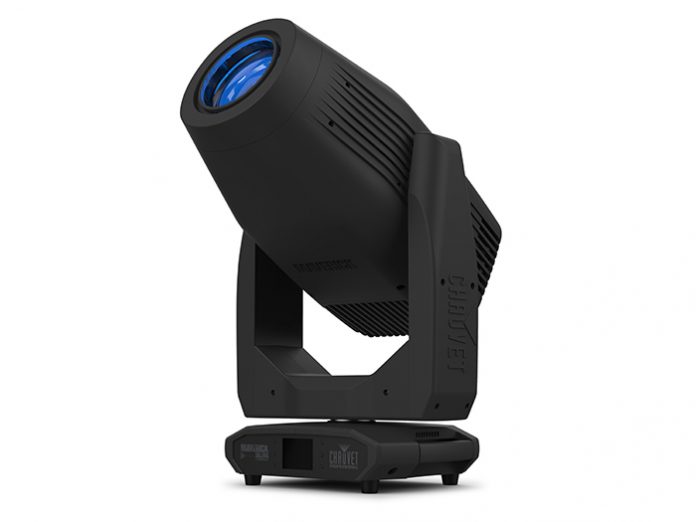Where does the Maverick Silens 2 Profile fit within the CHAUVET Professional arsenal?
The Maverick Silens 2 Profile was engineered with one goal in mind. The fixture answers an issue which has existed in theatres for many years now. Lighting designers and operators all want the versatility that a feature packed moving head brings. The ability to focus on various parts of the stage without having to use several static profile fixtures to do it. The issue has always been that the ambient noise created by these fixtures is enough to ruin the performance for those in the audience.
With the Silens, it is small enough that it can be placed in the wings and on the front bars, is bright enough that it can hit the correct parts of the stage at a required light level and, most importantly, it is quiet enough that it does not impact on the experience of the audience in the theatre or detract from how immersed they are in a performance.
How has the creation of the fixture been achieved from a technical standpoint?
We started from the ground up to create a purpose-built fixture that utilises cutting-edge optical and cooling technology while housed in the smallest build possible. The unit delivers over 11,000 lumens with 100% convection cooling, there are no fans in this unit. The motors and effects have been tuned for near silence and smoothness. We wanted the fixture to be silent and cool – a high-power light source such as this, you need to have a sizeable amount of passive cooling, and we do.
The starting point was the thermal management – produce something silent, to do this we had to use the best in copper and aluminium cooling and use more oil cool than before to draw heat from the back of the source. Meanwhile we had to do this without adding excessive amounts of weight to the fixture and thus rendering it too heavy to lift.
What are some of the key features?
Another new way of thinking regarding the source was to look it the steady modes often fixtures will have different fan modes to reduce noise but on this unit what we wanted to do was optimise steady output so we looked at how the unit manages itself at different ambient temperatures and added the options to be able to set the unit for a 26°C room or a 35°C room. The unit features a unique Dual source which has fixed white LEDs around the outside of an RGB cob module in the middle; this RGB module is used to give +/- green for camera use and helps tone the output when in red shift mode.
We also looked into feedback we’d had previously with frost flags – often they are too heavy or too light, but by thinking of the frost in the same way as a colour flag and using graduation, we were able to create a variable Frost system we were truly proud of.
Where can we expect to see the Maverick Silens 2 Profile in the coming months?
We believe the Maverick Silens offers great commercial advantage within the theatrical and Studio sphere because it has been so well tuned to the requirements they have asked for and offers a set of USPs, we believe, are unmatched. The unit is a reasonably compact size, a manageable weight, has a tailored set of features and most importantly, is silent.
How did it feel for the fixture to be recognised at The PLASA Awards for Innovation?
It was great for us to be able to accept the reward this year. We are truly convinced that we have something exceptional with the Silens 2 Profile, and we were extremely glad that the judges recognised that.
They took the time to discuss various technical aspects, looking at more than just the silent aspect, taking into account the variable frost, quality of light, even looking under the housing to see how we accomplish certain things. Their diverse background, be it lighting, sound or something else entirely, also allowed them to discuss and assess the fixture across multiple disciplines.
This article originally appeared in issue #265 of TPi, which you can read here.






